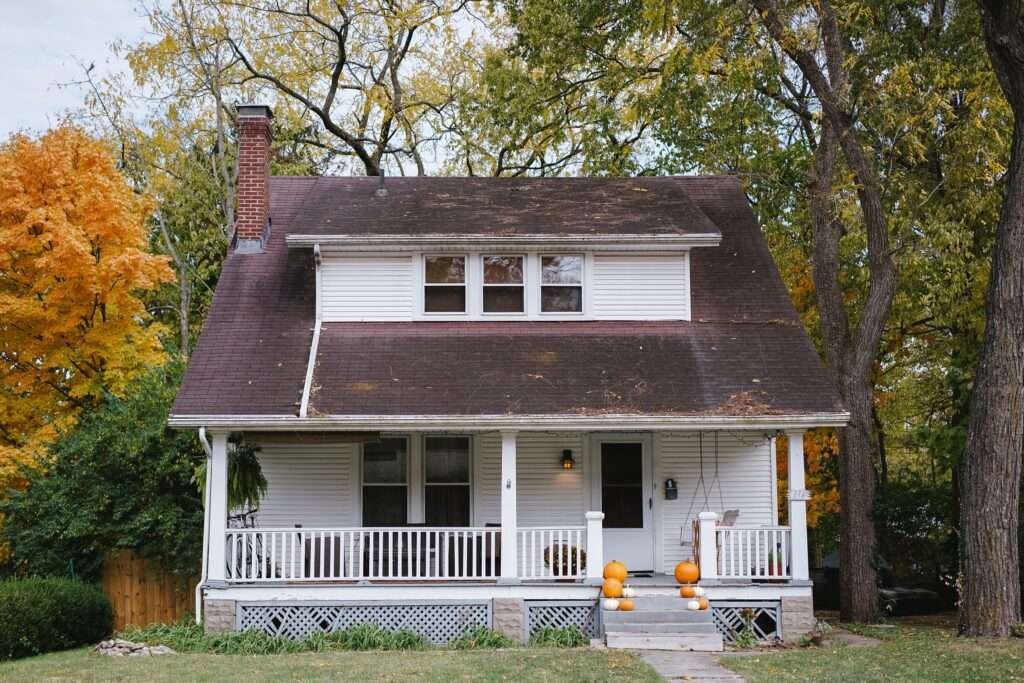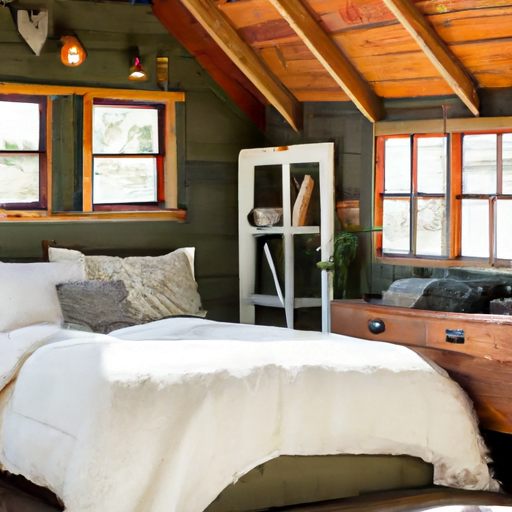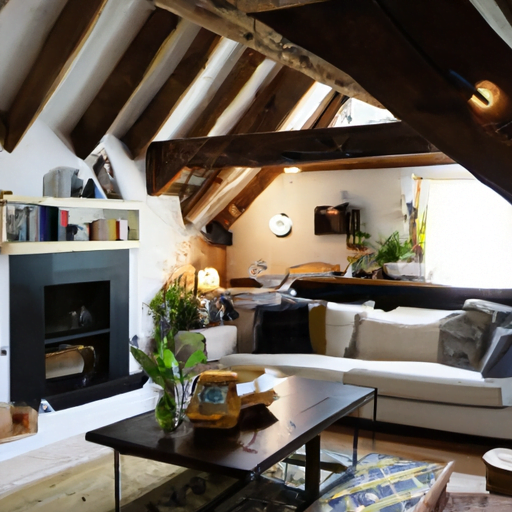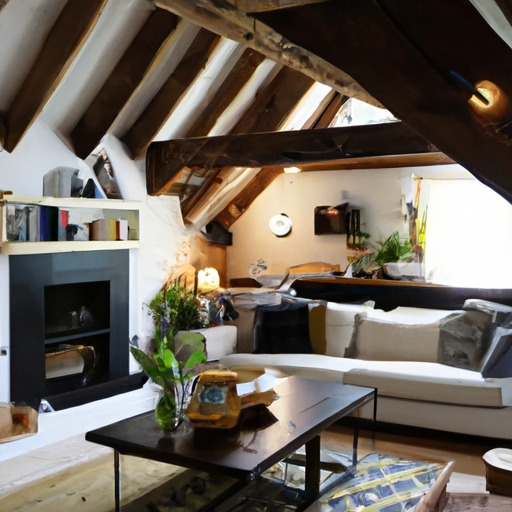Living off the grid has become a popular choice for those seeking a simpler and more sustainable lifestyle. However, when it comes to creating a comfortable and functional living space in your off-the-grid shed house, maximizing space is key. By utilizing smart storage solutions, multi-purpose furniture, and efficient layouts, you can transform your small space into a cozy and organized oasis. In this article, we will explore practical tips and creative ideas to help you make the most out of your off-the-grid shed house, without compromising on comfort. From clever space-saving hacks to innovative design strategies, you’ll discover how to transform your humble shed into a stylish and efficient home. So, let’s dive into the world of maximizing space and comfort in your off-the-grid shed house!
Design Considerations
Choosing the Right Location
When designing your off-the-grid shed house, one of the most important considerations is choosing the right location. Look for a spot that receives ample sunlight throughout the day to optimize the use of solar power systems. Additionally, consider the natural surroundings and choose a location that provides beautiful views, peace, and tranquility.
Optimizing Natural Light
To create a bright and inviting living space, it’s crucial to optimize natural light in your off-the-grid shed house. Consider incorporating large windows and skylights to allow ample sunlight to flood the interiors. This not only reduces the need for artificial lighting but also provides a sense of openness and connection with the outdoors.
Efficient Floor Plans
Efficient floor plans are essential when designing an off-the-grid shed house. Opt for open floor plans that maximize the use of limited space while creating a seamless flow between different areas of the house. Consider using sliding doors or room dividers to maintain privacy while still promoting an open feel.
Multi-functional Furniture
In a small off-the-grid shed house, multi-functional furniture is a game-changer. Look for pieces that can serve multiple purposes, such as a sofa that doubles as a guest bed or a dining table that can be folded against the wall when not in use. This not only saves space but also enhances the functionality of your living areas.
Energy Efficiency
Solar Power Systems
An off-the-grid shed house relies heavily on solar power systems for energy. Install rooftop solar panels to harness the power of the sun and generate electricity. This sustainable energy source helps reduce your carbon footprint while providing a reliable source of power even in remote locations.
Insulation and Ventilation
Efficient insulation and ventilation are vital for energy efficiency in your off-the-grid shed house. Properly insulate the walls, roof, and floors to minimize heat transfer and maintain a comfortable indoor temperature. Additionally, incorporate natural ventilation systems, such as strategic window placements and ceiling fans, to promote airflow and reduce the need for air conditioning.
Energy-efficient Appliances
When choosing appliances for your off-the-grid shed house, opt for energy-efficient models. Look for appliances with Energy Star ratings, as they are designed to consume less energy while still providing excellent performance. Consider appliances such as refrigerators, stoves, and water heaters that are specifically designed for off-the-grid living.
Passive Heating and Cooling
Passive heating and cooling strategies can greatly improve the energy efficiency of your off-the-grid shed house. Incorporate features such as large roof overhangs to provide shade during hot summer months and allow sunlight to warm the interiors during colder seasons. Additionally, design your shed house with proper insulation and double-glazed windows to minimize heat loss or gain.

Water Management
Rainwater Harvesting
One of the key considerations for sustainable living in an off-the-grid shed house is water management. Implement rainwater harvesting systems to collect rainwater from the roof and store it in tanks or cisterns. This water can be used for various purposes, such as irrigation, cleaning, and even drinking with proper filtration systems.
Graywater Recycling
To further reduce water consumption, consider implementing graywater recycling systems in your off-the-grid shed house. Graywater refers to the water from sources like sinks, showers, and laundry. By treating and filtering this water, it can be reused for irrigation or flushing toilets, significantly reducing your reliance on fresh water sources.
Composting Toilets
Another water-saving solution for off-the-grid living is composting toilets. These eco-friendly toilets break down waste through natural processes, turning it into nutrient-rich compost. Composting toilets require little to no water for flushing and are a great alternative to traditional flush toilets, reducing water usage and environmental impact.
Water Conservation
In addition to rainwater harvesting and graywater recycling, it’s essential to practice water conservation in your off-the-grid shed house. Install low-flow faucets and showerheads that minimize water usage without compromising functionality. Additionally, consider planting native, drought-resistant plants in your outdoor spaces, reducing the need for excessive irrigation.
Storage Solutions
Utilizing Vertical Space
Maximizing storage space is crucial in a small off-the-grid shed house. Utilize vertical space by incorporating tall shelves, wall-mounted cabinets, and hanging storage solutions. This allows you to make the most of every inch while keeping your belongings organized and easily accessible.
Built-in Storage Units
To optimize space in your off-the-grid shed house, consider incorporating built-in storage units. Custom-designed cabinets, closets, and shelving can be tailored to fit your specific needs and provide ample storage without occupying valuable floor space. These built-in units also contribute to a seamless and cohesive aesthetic in your living areas.
Creative Organizational Systems
When it comes to storage in an off-the-grid shed house, think outside the box and get creative with organizational systems. Utilize storage ottomans that double as seating, install pegboards for hanging tools and accessories, or use under-bed storage containers to maximize space. By exploring innovative storage solutions, you can ensure that every item has its place.
Outdoor Storage Options
Make use of your outdoor space for additional storage in your off-the-grid shed house. Install outdoor sheds or storage containers to store items like gardening tools, bicycles, or firewood. By keeping these items outside, you free up valuable indoor space while still ensuring they are protected from the elements.

Maximizing Outdoor Space
Outdoor Living Areas
Create inviting outdoor living areas to maximize space in your off-the-grid shed house. Design a patio or deck complete with comfortable seating, dining areas, and shade structures. This extension of your living space allows you to enjoy the beauty of nature while providing ample space for entertaining or relaxing outdoors.
Container Gardening
If you have limited outdoor space, container gardening is an excellent solution. Utilize pots, planters, and raised beds to grow your own herbs, vegetables, or flowers. By vertical gardening or using hanging planters, you can make the most of every inch and create a lush and vibrant outdoor oasis.
Vertical Planters
Incorporate vertical planters in your off-the-grid shed house to maximize your gardening capabilities. Vertical planters can be attached to walls, fences, or even hung from the ceiling. This innovative approach allows you to grow a variety of plants without occupying valuable floor space, transforming even the smallest outdoor areas into lush green spaces.
Portable Furniture
To make the most of your outdoor space in an off-the-grid shed house, consider using portable furniture. Folding chairs, collapsible tables, and lightweight seating options can easily be moved and stored when not in use. This flexibility allows you to utilize your outdoor space for multiple purposes and adapt to changing needs.
Smart Technology Integration
Smart Lighting Systems
Incorporate smart lighting systems in your off-the-grid shed house to enhance energy efficiency and convenience. Install LED lights that are energy-efficient and longer-lasting than traditional incandescent bulbs. Additionally, utilize smart switches or motion sensors that automatically turn off lights when a room is unoccupied, further reducing energy consumption.
Thermostats and HVAC Control
Smart thermostats and HVAC control systems can greatly improve the energy efficiency and comfort of your off-the-grid shed house. Programmable thermostats allow you to set specific temperature schedules, ensuring that energy is not wasted when you’re away. Additionally, consider integrating zoning systems that allow you to control the temperature in individual rooms, optimizing comfort and energy usage.
Security and Surveillance
Security and surveillance systems provide peace of mind when living off-the-grid. Install smart cameras, motion sensors, and door/window sensors to enhance the security of your shed house. These systems can be monitored remotely, allowing you to keep an eye on your property even when you’re away.
Automated Window Treatments
Automated window treatments are a convenient addition to your off-the-grid shed house. Motorized blinds or curtains can be controlled with a remote or programmed to open and close at specific times, allowing you to maximize natural light and privacy without the need for manual operation.

Incorporating Sustainable Materials
Recycled and Reclaimed Materials
Choosing sustainable materials is essential for a low-impact off-the-grid shed house. Opt for recycled or reclaimed materials whenever possible. Utilize salvaged wood, reclaimed bricks, or recycled metal for construction and design elements. Not only does this reduce the demand for new materials, but it also adds a unique charm and character to your living space.
Bamboo and Cork Flooring
Consider using eco-friendly flooring options like bamboo or cork in your off-the-grid shed house. Bamboo is a sustainable and rapidly renewable resource that provides a durable and attractive flooring solution. Cork is another excellent choice, as it is harvested from the bark of cork oak trees without harming the tree, making it a renewable and environmentally friendly option.
Low VOC Paint
When painting your off-the-grid shed house, choose low VOC (Volatile Organic Compounds) or zero VOC paints. These paints release fewer harmful chemicals into the air, creating a healthier indoor environment for you and your family. Additionally, look for paints that are water-based and have minimal impact on air quality.
Energy-efficient Windows
Energy-efficient windows play a significant role in insulating your off-the-grid shed house. Opt for windows with multiple panes, low-emissivity coatings, and insulated frames to minimize heat transfer. These windows help maintain a comfortable indoor temperature, reduce energy consumption, and even offer sound insulation benefits.
Creating a Cozy Atmosphere
Proper Insulation and Weatherstripping
Creating a cozy atmosphere in your off-the-grid shed house starts with proper insulation and weatherstripping. Insulate the walls, roof, and floors to minimize heat loss during cold winters and keep the interior comfortable. Additionally, ensure that all windows and doors are properly weatherstripped to prevent drafts and air leakage.
Fireplace or Wood-burning Stove
A fireplace or wood-burning stove adds warmth and ambiance to your off-the-grid shed house. These heating options provide a cozy focal point while also serving as a sustainable heat source. By utilizing sustainably sourced firewood, you can enjoy the crackling sound and comforting warmth, even when living off-the-grid.
Layered Textiles and Rugs
To create a cozy and comfortable living space, layer textiles and rugs in your off-the-grid shed house. Choose soft blankets, cushions, and curtains that add warmth and texture to your interiors. Additionally, incorporate rugs to define different areas of your living space and provide a soft and inviting surface underfoot.
Natural Aromatherapy
Enhance the atmosphere of your off-the-grid shed house by utilizing natural aromatherapy techniques. Utilize essential oils or dried herbs to create a soothing and refreshing scent. Consider using a diffuser, herbal sachets, or even scented candles made from natural soy or beeswax to fill your living space with delightful fragrances.

Multi-purpose Outdoor Structures
Greenhouses and Conservatories
Consider adding greenhouses or conservatories to your off-the-grid shed house. These structures allow you to grow plants, herbs, or even vegetables year-round, providing a sustainable food source and a connection with nature. Additionally, they can serve as additional living or relaxation areas, allowing you to enjoy the outdoors even during inclement weather.
Workshops and Studios
If you have a passion for crafts, hobbies, or creative pursuits, consider incorporating a workshop or studio in your off-the-grid shed house. This dedicated space provides a sanctuary for artistic endeavors and allows you to pursue your passions while living off-the-grid. Whether it’s woodworking, painting, or sewing, a dedicated space gives you the freedom to explore and create.
Outdoor Kitchen and Dining Areas
Take advantage of your outdoor space by incorporating an outdoor kitchen and dining area in your off-the-grid shed house. Install a grill, sink, and food preparation area, allowing you to cook and entertain outdoors. Design a cozy dining area with seating and shade structures to create a welcoming space for enjoying meals alfresco.
Guest Accommodations
Incorporating guest accommodations in your off-the-grid shed house allows you to host friends and family comfortably. Whether it’s a separate guest cottage, a converted shed, or a loft space, having dedicated spaces for guests ensures their comfort and privacy while still being a part of your sustainable off-the-grid lifestyle.
Designing for Accessibility
Wider Doorways and Hallways
When designing an off-the-grid shed house, consider incorporating wider doorways and hallways to ensure accessibility. This allows for easy maneuvering and ensures that individuals with mobility aids can navigate the space comfortably. By paying attention to these details, you create a home that can be enjoyed by everyone, regardless of physical abilities.
Accessible Bathrooms
Make your off-the-grid shed house more accessible by designing bathrooms with accessible features. Install grab bars near toilets and showers, incorporate roll-in showers or walk-in tubs, and ensure that sinks and countertops are at appropriate heights. These design elements facilitate independence and ensure that individuals with mobility challenges can use the bathroom with ease.
User-friendly Kitchen Layout
A user-friendly kitchen layout is crucial in an off-the-grid shed house. Employ universal design principles that prioritize ease of use and accessibility. Opt for lower countertops, adjustable-height cabinets, and pull-out shelves. These features ensure that individuals of varying abilities can prepare meals and navigate the kitchen space without limitations.
Wheelchair-friendly Outdoor Spaces
Create outdoor spaces that are wheelchair-friendly in your off-the-grid shed house. Ensure that pathways are wide enough to accommodate wheelchairs, and consider using materials like smooth concrete or pavers that provide a stable and even surface. By making your outdoor spaces accessible, you can fully enjoy the beauty of nature and create a welcoming environment for all.
In conclusion, designing an off-the-grid shed house requires careful consideration of various factors, from optimizing natural light and energy efficiency to water management and storage solutions. By incorporating sustainable materials, maximizing outdoor space, and integrating smart technology, you can create a comfortable and eco-friendly living space that meets your needs and values while embracing a self-sufficient lifestyle. With attention to accessibility and attention to detail, your off-the-grid shed house can become a haven for relaxation, creativity, and sustainable living.





